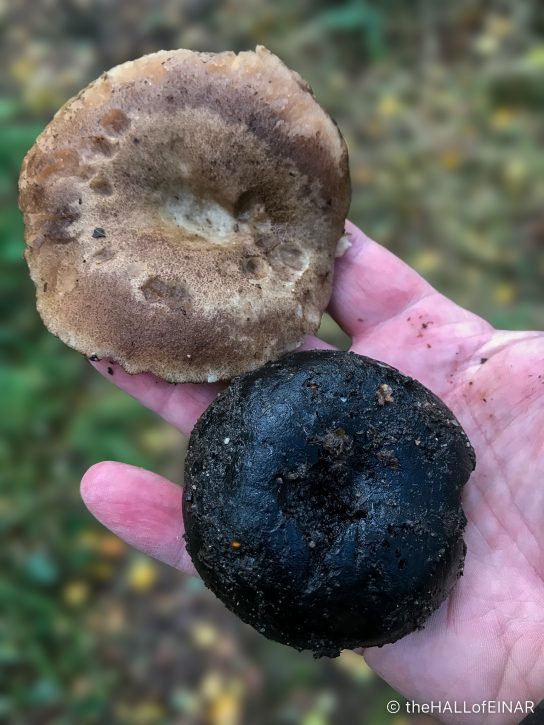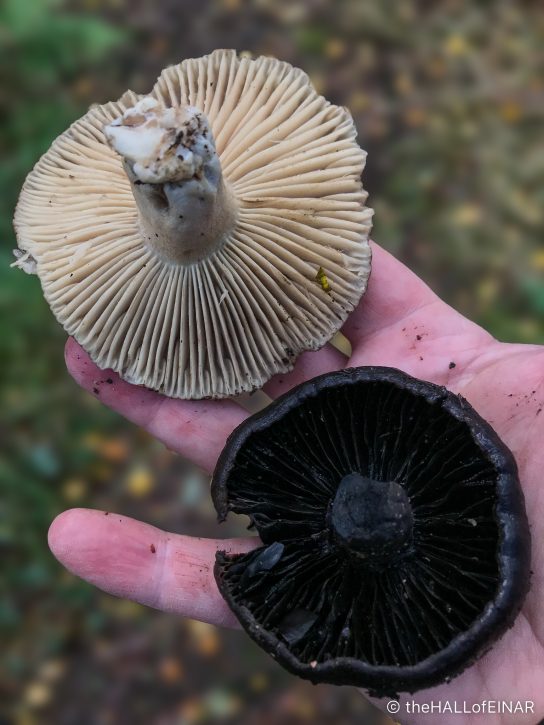Blackening Brittlegills
There are Blackening Brittlegills here on Dartmoor. They are fungi which live in broadleaved, mixed and coniferous woodland. They really do like to cover all bases. Their strange property is that when they age they turn coal black. Would you know that these two are the same species?
Russulas have an intimate relationship with the multitude of trees beneath which they festoon the fallen leaves. They have microscopic tubes, called mycorrhizae, which grow around the small lateral roots of trees; they are ectomycorrhizal. Through these touch-points, the fungi provide trees with water and minerals, meaning trees with healthy fungal colonies are more likely to withstand poor soils and droughts. The trees provide the fungi with carbohydrates in return. Ectomycorrhizal fungi water and fertilise their trees, which feed them sweet treats to encourage their fungal blooms. They are symbiotic reciprocal gardeners.
I promised myself two years ago I’d come back to see them again and take photographs of them before they went black:
I have!
Turning them over, the gills underneath the cap are very widely spaced, which helps confirm they’re not one of the other blackening species.
Now I need to come back again and take some artistic shots rather than mobile phone images. I look forward to it.

